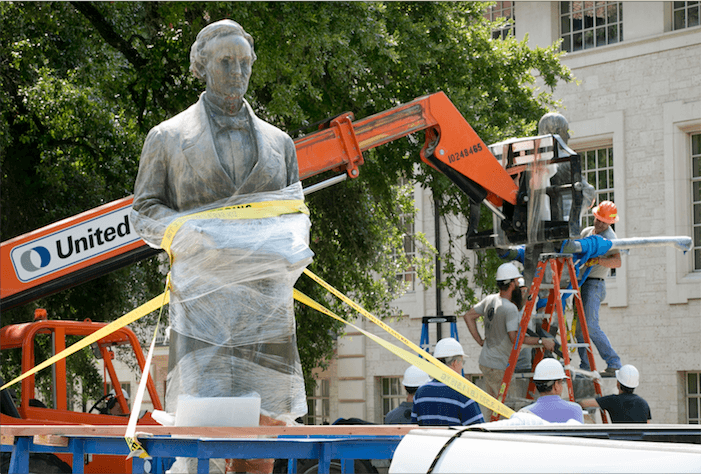by The Cowl Editor on August 31, 2017
Opinion

by Kevin Copp ’18
Opinion Staff
The decisions of many cities, states, and universities to remove Confederate statues has polarized America. A stone carving of Robert E. Lee in Charlottesville, for instance, still has significant meaning for people from both the North and the South.
Riots have broken out and lives have been lost because of the relevance that a bust of a general who lost a war over 150 years ago maintains today.
Despite protests from some conservatives who fear that history will be forgotten, the removal of any monument glorifying the Confederacy would enable American society to distance itself from its racist past and better acknowledge the equal acceptance of all its citizens. For that reason, removing Confederate statues can move America forward.
Why do statues of the losers of the Civil War exist in the first place? It is not often that defeated soldiers and leaders receive statues—Germany certainly has no statues of Hitler.
Supporters of the statues suggest they are necessary to remember history and claim that their removal will cause the evil of slavery to be forgotten.
Yet, to continue the German analogy, no statues of Hitler are necessary to remember the wickedness of the Holocaust. Can it be only in America that monuments of those who do evil are necessary to memorialize the evil they have done?
The main reason that so many Confederate statues were erected around the turn of the twentieth century is actually the complete opposite of the remembrance of the evils of slavery.
According to historian Joshua Zeitz, Southern cities, towns, and states erected Confederate statues to mask the real intention of the Confederacy in the war and make slavery appear to be a secondary issue for the South. Confederate statues and monuments were installed to make people forget how important slavery used to be to the Southern ideology and economy.
By creating statues that ostensibly regard the courage of Confederate men who fought for their own honor and pride as well as their states’ rights as opposed to the institution of slavery, Southern leaders have tried to remove the place of slavery from the Civil War and American history.
Their continued existence constitutes a false rewriting of history. Men who fought to protect a system in which human beings were treated wholly unfairly are glorified when they should be admonished.
Only getting rid of every Confederate statue will ensure that the meaning of the Civil War and the evil nature of slavery cannot be misunderstood.
How ironic is it, then, that a great number of the protesters of the removal of the statue of Robert E. Lee in Charlottesville were neo-Nazis and Klansmen? These followers of hatred understand the true value of admiring the Confederacy and those who died for it.
They know the importance a statue has to influence a judgment. They know that little boys and girls from the South will try to emulate people who fought to protect slavery. They know that hiding the slavery of the past can help hide the racism of the present. They know that falsely rewriting history can help them ignore the self-evident truths that all men and women are created equal.